It might come as a surprise, but New York City, a place that continues to grow bigger and taller every year, is actually number one in Leadership in Energy and Environmental Design (LEED) by a little over 5 million square feet. The initiative for the City to “go green” didn’t truly get going until 2005. 2005 serves as the baseline year for the City’s One City: Built to Last plan, with the plan’s main goal being to reduce building-based emissions by 30 percent by 2025. As far as we can tell, things are certainly headed in the right direction. Take a look.
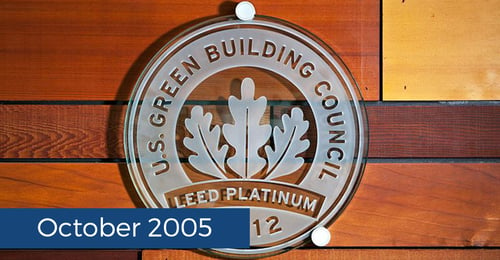
Photo Credit: 'LEED Platinum' by Blanchethouse under CC BY-SA 4.0
In October of 2005, NYC adopted Local Law 86, one of the nation’s first green building laws. Local Law 86 establishes NYC's unwavering commitment to green building; the law requires NYC projects to achieve a LEED rating of Certified or Silver, and often, to also use energy and water in more efficient manners than other codes require. The usage pattern of the aforementioned depends on the estimated capital construction costs and the occupied use of any specific project. With the enactment of Local Law 86, it also became a requirement that the Mayor of New York City develops rules to implement the program. That duty was delegated to the New York City Office of Environmental Coordination (OEC).
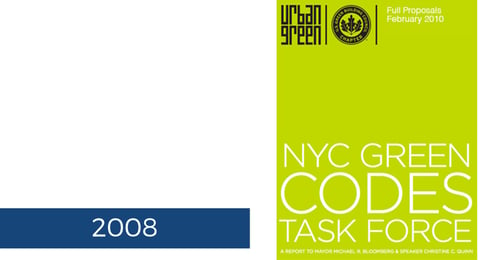 Photo Credit: UrbanGreenCouncil.org
Photo Credit: UrbanGreenCouncil.org
In 2008, New York City Mayor Michael R. Bloomberg and Council Speaker Christine C. Quinn asked the Urban Green Council to create a task force of more than 200 experts to review NYC’s codes and regulations, making suggestions for more sustainable, energy efficient changes. The Task Force recommended changes to the laws and regulations affecting New York City buildings, which, at the time, accounted for roughly 75% of city greenhouse gas emissions, 94% of electrical consumption, and 85% of water usage. This assignment led to the Green Codes Task Force proposals, which were presented in February of 2010, after 18 months of analysis and industry collaboration. 111 recommendations were made, each impacting new construction and renovation plans; they strove to remove those hindrances that had previously been damaging NYC’s attempts at green practices.
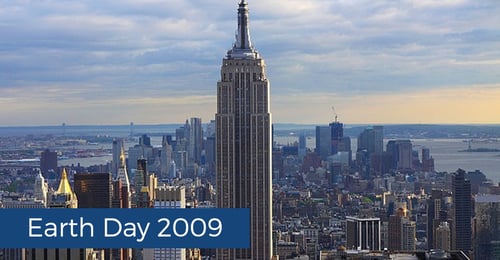 On Earth Day in 2009, former Mayor Bloomberg introduced the Greener Greater Buildings Plan. This plan was meant to address the energy issue that comes with larger pre-existing buildings constructed long before the creation of green laws that newly constructed and renovated buildings have to follow. It is also an important piece a part of helping New York reach its sustainability goals, as they cannot be accomplished if some of the City’s largest buildings—ones using the most energy—are not transformed to meet new standards. The plan consists of 4 parts: Local Law 84: Benchmarking, Local Law 85: NYC Energy Conservation Code, Local Law 87: Energy Audits & Retro-commissioning, and Local Law 88: Lighting & Sub-metering (view our guide to these Local Laws here). These laws were passed in December 2009.
On Earth Day in 2009, former Mayor Bloomberg introduced the Greener Greater Buildings Plan. This plan was meant to address the energy issue that comes with larger pre-existing buildings constructed long before the creation of green laws that newly constructed and renovated buildings have to follow. It is also an important piece a part of helping New York reach its sustainability goals, as they cannot be accomplished if some of the City’s largest buildings—ones using the most energy—are not transformed to meet new standards. The plan consists of 4 parts: Local Law 84: Benchmarking, Local Law 85: NYC Energy Conservation Code, Local Law 87: Energy Audits & Retro-commissioning, and Local Law 88: Lighting & Sub-metering (view our guide to these Local Laws here). These laws were passed in December 2009.
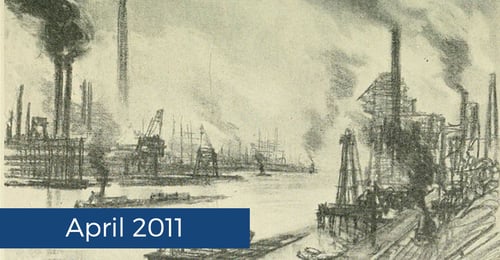 In April of 2011, former Mayor Bloomberg finalized a New York City Department of Environmental Protection rule regarding regulations on two environmentally unfriendly heating oils: Number 6 oil and Number 4 oil. This rule was put into effect immediately. It is estimated that roughly 6,000 children and adults are in the emergency room for asthma-related problems each year, and over 3,000 deaths occur relating to air pollution to that same effect. The 1 percent of buildings producing 86 percent of the air pollution in the city do so by burning these dirty oils. By enacting this Environmental Protection rule and eliminating the use of these oils, it is estimated that thousands of lives will be saved over the next couple decades.
In April of 2011, former Mayor Bloomberg finalized a New York City Department of Environmental Protection rule regarding regulations on two environmentally unfriendly heating oils: Number 6 oil and Number 4 oil. This rule was put into effect immediately. It is estimated that roughly 6,000 children and adults are in the emergency room for asthma-related problems each year, and over 3,000 deaths occur relating to air pollution to that same effect. The 1 percent of buildings producing 86 percent of the air pollution in the city do so by burning these dirty oils. By enacting this Environmental Protection rule and eliminating the use of these oils, it is estimated that thousands of lives will be saved over the next couple decades.
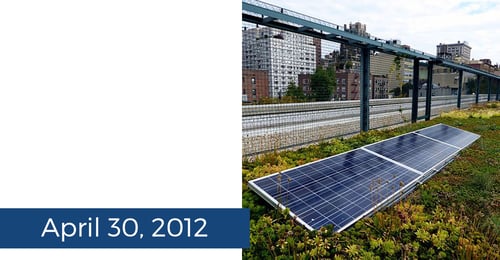 Photo Credit: 'PS 41 GREENWICH VILLAGE SCHOOL' by Aloha Jon under CC BY-SA 4.0
Photo Credit: 'PS 41 GREENWICH VILLAGE SCHOOL' by Aloha Jon under CC BY-SA 4.0
The Zone Green text amendment was adopted by the City Council in April 2012. This amendment was introduced as a way to make more green building investment options available for all types of owners citywide. These investments include, but are not limited to: allowance for extra room to insulate old building walls efficiently, sun control devices or awnings that are allowed to project 2 feet – 6 inches when above the ground floor over required open areas, solar paneling on flat roofs regardless of building height, as well as exemption of green roofs, decks, skylights, and rooftop greenhouses from floor area and height limits (granted they meet certain requirements). Wind turbines are also allowed to rise up to 55 feet above a rooftop under these investments.
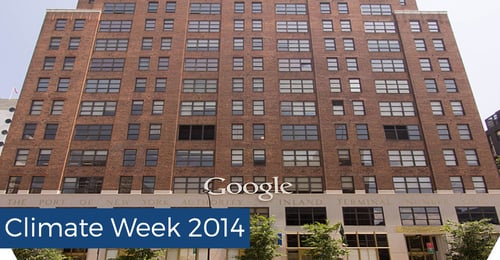 Photo Credit: '111 Eighth Avenue' by Scott Roy Atwood under CC BY-SA 3.0
Photo Credit: '111 Eighth Avenue' by Scott Roy Atwood under CC BY-SA 3.0
Mayor de Blasio announces his and the City’s commitment to reduce citywide emissions by 80 percent by 2050, an ambitious goal in comparison to that of reducing building emissions by a mere 30 percent by 2025. To aid in reaching this goal, de Blasio reveals the One City: Built to Last-Transforming NYC’s Buildings for a Low Carbon Future plan. This plan reaches out to the private sector, which includes universities, hospitals, commercial firms, commercial owners, residential management firms, and hotels. Volunteers a part of the initiative add up to 500 million square feet of space, and have accepted the NYC Carbon Challenge of reducing their building-based emissions by 30 percent or more by 2025. Even just shortly after the acceptance of this challenge, some volunteers already met their goals, while others are upping their commitment to 50 percent by 2025.
 Photo Credit: 'HL23 from High Line' by Beyond My Ken under CC BY-SA 4.0
Photo Credit: 'HL23 from High Line' by Beyond My Ken under CC BY-SA 4.0
New York City is rated by LEEDS as the leader in going green, with the most Leadership in Energy and Environmental Design certified square footage. LEED is a scoring system created by the United States Green Building Council that seeks to evaluate the environmental performance of a building. The rankings are as follows: Silver, Gold, and Platinum, with only 5 percent of the buildings gaining Platinum status. Of New York City’s 108 total medals, 4 are platinum-certified.







